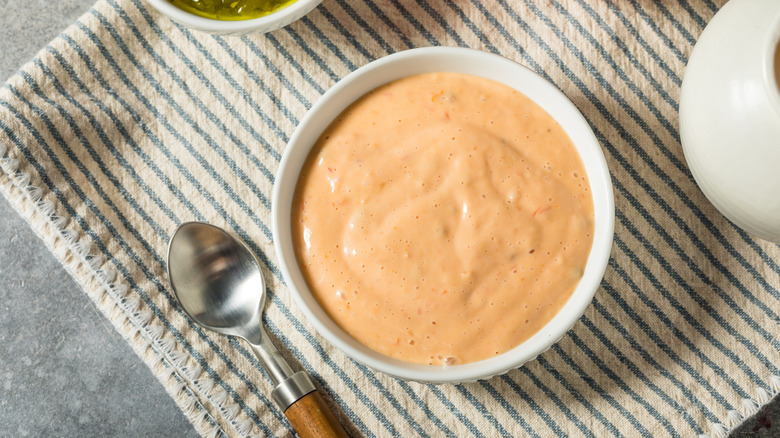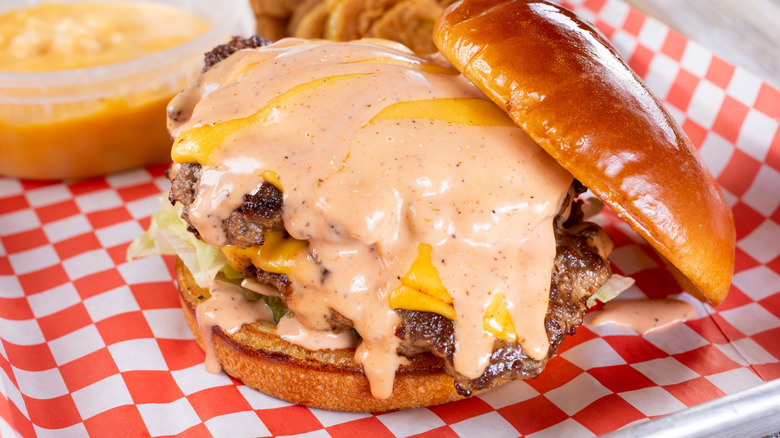Russian Dressing Vs. Thousand Island Dressing, Explained
A good Reuben isn't anything too complicated. All you need is corned beef, Swiss cheese, sauerkraut, and rye bread — but the one ingredient that really ties the room together is the Russian dressing. The creamy pinkish-orange sauce brings tang, additional fat, and moisture to the proceedings, no question, but it was never quite clear to me what separates Russian dressing from its more casual cousin, Thousand Island. After all, they look pretty much the same, and they bring the same virtues to a big honking sandwich. The difference, it turns out, all comes down to a single ingredient.
The one ingredient that separates Russian from Thousand Island
The ingredient that differentiates Russian dressing from Thousand Island is horseradish. When you have Russian dressing accenting a hearty sandwich like a Reuben, the horseradish can be hard to detect, especially when you've got the sharp, funky flavors of sauerkraut to contend with. Instead of kicking you in the nose, the horseradish just adds a certain je ne sais quoi to the sauce and, by extension, the sandwich.
The compound in horseradish that gives it such sinus-clearing power is something called allyl isothiocyanate, which is also present in mustard and wasabi. Those foods are "spicy" in a way that hits your nose, whereas the capsaicin in chili peppers is the type that burns your tongue.
The rest of the ingredients in Russian dressing are similar if not identical to Thousand Island: mayo, ketchup, finely chopped veggies such as onion or pickle relish, and maybe a dash of Worcestershire sauce.
Why Thousand Island remains the sauce of choice for burgers
Mental Floss suggests that the Reuben is how this general style of dressing made the jump from salads to sandwiches in the first place. And while the horseradish arguably makes Russian dressing a little more flavorful, Thousand Island tends to be the secret sauce of choice for burgers, perhaps because the horseradish would just get buried beneath the other elements anyway.
Russian and Thousand Island have lots of other cousins, too. McDonald's Big Mac sauce is sort of a cross between Thousand Island and Russian dressing, but it omits sweet ketchup in favor of the horseradish-like burn of mustard. Then there's comeback sauce, comparable to Thousand Island without the pickle relish. And although the recipe for Raising Cane's dipping sauce remains a secret, I'd be surprised if it were much different.
When you bite into your next Reuben — which should be soon — take a closer look at what's on it. Chew slowly. Focus on the flavors, letting your palate hunt around for that little horseradish kick. Once you find it, it's like the secret handshake that gains you entry into the world of damn good sandwiches.


